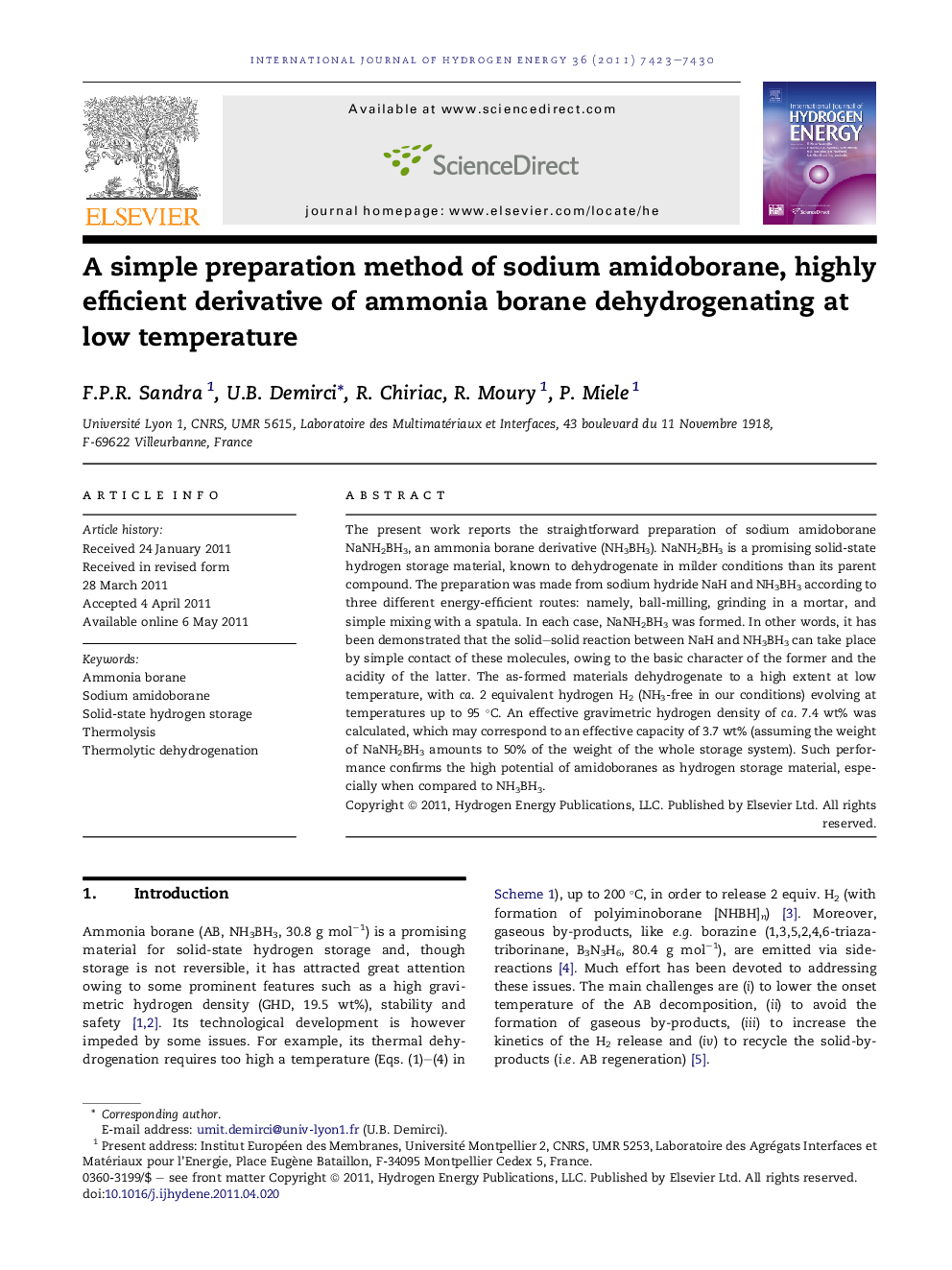| Article ID | Journal | Published Year | Pages | File Type |
|---|---|---|---|---|
| 1279269 | International Journal of Hydrogen Energy | 2011 | 8 Pages |
The present work reports the straightforward preparation of sodium amidoborane NaNH2BH3, an ammonia borane derivative (NH3BH3). NaNH2BH3 is a promising solid-state hydrogen storage material, known to dehydrogenate in milder conditions than its parent compound. The preparation was made from sodium hydride NaH and NH3BH3 according to three different energy-efficient routes: namely, ball-milling, grinding in a mortar, and simple mixing with a spatula. In each case, NaNH2BH3 was formed. In other words, it has been demonstrated that the solid–solid reaction between NaH and NH3BH3 can take place by simple contact of these molecules, owing to the basic character of the former and the acidity of the latter. The as-formed materials dehydrogenate to a high extent at low temperature, with ca. 2 equivalent hydrogen H2 (NH3-free in our conditions) evolving at temperatures up to 95 °C. An effective gravimetric hydrogen density of ca. 7.4 wt% was calculated, which may correspond to an effective capacity of 3.7 wt% (assuming the weight of NaNH2BH3 amounts to 50% of the weight of the whole storage system). Such performance confirms the high potential of amidoboranes as hydrogen storage material, especially when compared to NH3BH3.
► Sodium amidoborane can be prepared by simply mixing sodium hydride and ammonia borane. ► The as-formed sodium amidoborane releases 2 equiv. hydrogen at temperatures up to 95 °C. ► Evolving hydrogen is ammonia-free. ► A material-based gravimetric hydrogen capacity of 7.4 wt% has been achieved. ► A system-based gravimetric hydrogen capacity of 3.7 wt% could be achieved.
